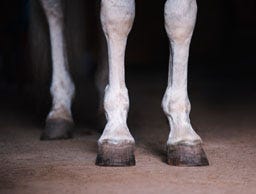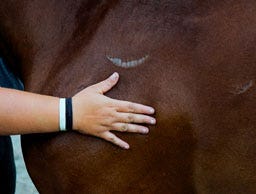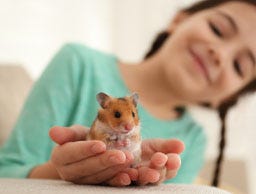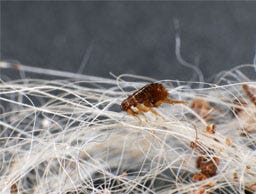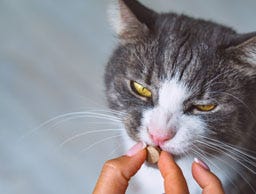Complete Guide to Getting Rid of Fleas
Finding out your pet has fleas can be a real nuisance, but if left for too long, one flea can quickly become an infestation. This is why it’s essential to know how to handle your pet having fleas and how to effectively get rid of them. In this guide, we are going to be explaining everything you need to know about fleas, including how to identify them, how to kill them, and how to stop them coming back.
What are Fleas?
Fleas are small parasitic insects with strong legs which allow them to jump onto your pet where they’ll burrow themselves in your pet’s fur where they proceed to bite them and feed on their blood. Once fleas have made themselves at home, they’ll continue to multiply until they become a full infestation, which can be detrimental to your pet’s health as well as being an annoyance in your home.
Fleas are not picky eaters and will often latch onto whatever warm body they can find, although they prefer to live in your cat or dog's fur. Cat fleas (Ctenocephalides felis) and dog fleas (Ctenocephalides canis) are the most common types of fleas and tend to cause the most problems.
What do Fleas Look Like?
The only time you’ll be able to spot a flea on your pet is when they are in the adult part of their lifecycle. They are tiny, but you should be able to see them as brown spots in your pet’s fur. Fleas are wingless, brown insects with six legs, the back two of which are long and perfect for jumping on their new host. As an adult, a flea can measure between 1-4 mm depending on the type.

The Flea Life Cycle
There are four key stages to a flea life cycle; eggs, larvae, pupae and adult. Below, we dicuss what happen at each of these lifestages and what that means for your pet.
Flea Eggs
A female flea can lay between 25-50 eggs per day and within 24-48 hours of acquiring a new host. These eggs drop off the host into carpets and bedding where they take anywhere between 2-5 days to hatch. Flea eggs are small and white, often hard to see with the naked eye, though they are often found near ‘flea dirt’ which is also dropped by adult fleas.
Flea Larvae
Once they’re ready, the flea larvae will hatch from their egg and begin feeding on the flea dirt left behind by the adult fleas. This occurs off the host in your pets bed or carpet where the maggot-like larvae continue to grow anywhere between 1-5mm given they have the right conditions and nutrition, then they can then move onto the next lifecycle stage within 5-21 days.
Flea Pupae
Once the flea larva has developed, they enter the pupae stage. The flea larvae spin a silken cocoon around themselves, becoming flea pupae, where they can stay for between 8-13 days in the most ideal conditions.
However, while in this pupae stage, fleas can remain buried in your carpet or furnishing for as long as 30 weeks until they are properly stimulated by the vibration or physical pressure and warmth of a potential host. And even then the pupae don’t hatch all at once, so adult fleas slowly emerge once the correct conditions are met. This is why many pet owners may find their flea infestation returning despite treatment, as you need to kill every life stage of the flea in order to stop the infestation.
Adult Fleas
Once the flea emerges from its pupae stage, they have to feed on a new host within approximately a week or it will die. Once they are on a host, fleas will begin feeding on blood and leaving behind flea dirt (droppings) which you may see as small brown specks in your pet’s fur. An adult flea can live for up to 100 days while feeding on a host, in which time they will mate to create even more fleas. An adult female flea can start laying eggs within 24 hours of it’s first blood meal, and with adult females being able to lay up to 50 eggs a day, it’s easy to see how an infestation can take hold if not treated quickly.
Fleas like warm, moist environments and will breed and develop much faster when temperature and humidity levels are just right. In optimum conditions, a flea can go from an egg to an adult in as little as two weeks and only 5% of a flea infestation will be found on your pet. The rest will likely be littered around your house, in your pet’s bed and burrowed into carpets where they’ll continue to develop until they’re mature.
How Do Pets Catch Fleas?
The only thing needd for your pet to pick up fleas is an adult flea to land on them and begin laying eggs. This can happen in a number of ways, but the most common are:
- From other infested pets or wildlife - Fleas can jump up to 8" into the air, which is more than enough from them to jump from one host to another.
- From being outdoors - Fleas can survive without a host for between a few days to a few months wiithout a host depenging on their life stage and many lie in wait for a new host.
- From you - You track in a number of often microscopic bugs, including adult fleas of their eggs, after being outside. They can then fall off you and into your pet's home enviroment.
- From your home - Only an estimated 5% of adult fleas actually live on your pet. If you've had an infestation and havn't treated your home, you may be opening the door for reinfestation.


Can a House Cat Get Fleas?
Yes, it is entirely possible for a house cat to catch fleas. As we’ve explained, fleas can piggyback their way into your home on your shoes or clothes where they can then jump onto your cat.
A common mistake indoor cat owners make is believing their pet doesn’t need to be treated for fleas because they don’t go outside. Not only can this result in your pet becoming infested, but also your home as indoor cat owners may be less likely to check their pets for fleas.
When is Flea Season?
Another common misconception about fleas is that they are only active for certain times of the year. Unfortunately, fleas are a year-round problem and your pet and home can just as easily become infested in the winter months as they do in summer.
This is due to the number of homes now using central heating. Fleas need humidity and warmth to thrive, whereas before, fleas were a problem that occurred from spring to early autumn.
Why Should You Protect Your Pet Against Fleas?
Not only are fleas a nuisance to have in your home, but they also greatly impact the day-to-day life of your pet, causing them to be incredibly uncomfortable. It doesn’t take long for an infestation to take place either, as within as little as three weeks, 1 flea can become 1,000. With that many insects biting your dog, it should be no surprise that it can lead to a change in behaviour and even potential health concerns.
The effects of fleas won’t only affect your pet, either. Fleas may prefer an animal host, but they’re more than happy to bite humans as well. Plus, some fleas may also be carrying tapeworm eggs, which can then be transferred to your dog and even you. This is why when you treat your pet for fleas, you should also be treating them for worms. We offer a range of both cat wormers and dog worming treatments in our store. You can also find out more about intestinal worms in our Complete Worming Guide.
With all the nuisance and health issues fleas can cause, prevention is better than a cure! So it’s just as important, if not more, to prevent your pet from getting fleas.
Flea Allergy Dermatitis
One of the most common reactions to a flea infestation in dogs and cats is flea allergy dermatitis. This occurs when your pet has an extreme allergic reaction to flea saliva and will flare up when your pet is being bitten by fleas and injected with their saliva as they feed. In extreme cases, an allergic reaction can occur after just one flea bite.
If left untreated, the scratching and biting of the affected area can cause your pet to break the skin and lead to fungal or bacterial infections. It’s important for any pet owner to consult their vet if they think they may be experiencing flea allergy dermatitis, the symptoms of which include:
- Discomfort
- Itching
- Excessive biting, scratching and licking of inflamed areas.
- Skin inflammation
- Hair loss
- Scabs
- Oozing or crusted sores (hot spots)
- Darkening or thickening of affected skin
- Unpleasant odour (resulting from secondary infection)
You can help pets suffering from flea allergy dermatitis with skin and allergy treatments, but this will only work to soothe their symptoms. To stop it entirely, you need to stop the fleas from biting your pet by using a kill on contact flea treatment like like Advantage for Cats & Dogs. Unlike other treatments, these treatments kill fleas through your pet's skin and coat, meaning they don't need to bite your pet to ingest the toxin.
Signs Your Pet Has Fleas
Adult fleas are very small, so the early signs of infestation can be hard to spot as there aren't many adult fleas present. However, you can often find adult fleas on your pet in the fur around their neck, under their armpits, and in their groin area.
Other symptoms of fleas on pets include:
- Itching, chewing, and excessive sratching.
- Hair loss
- Red, irritated or inflamed skin
Fleas tend to remain as close to the skin as possible, so if you have a long-haired or double coated pet, this can make them tricky to spot just by parting their fur. In this case, we'd recommended going over your pet with a flea comb like this Mikki All Coats Flea Comb.
Another key way to determine if your pet has fleas is to keep an eye out for flea dirt. This is the waste left behind by adult fleas that can easily be mistaken for ordinary muck or dirt. You'll likely find it either in your pet's fur, or in plcae your pet likes to lie, such as sofas, pet beds, or even carpets.
The key to distinguishing flea dirt is tsmearing it on a wet paper towel or piece of white paper. If the speck smears red, or runs red when in contact with water, then it's flea dirt. And where's flea dirt, there's almost definitely fleas.
How to Get Rid of Fleas
While a flea infestation is a huge inconvenience, it can be treated and gotten rid of. However, the mistake many pet owners make is they treat the pet and not the home. By killing fleas on your pet and not treating your home, you are only prolonging the infestation before the fleas have the chance to jump right back onto your pet.
Remember, and infestation goes further than your pet. To properly erradicate a flea infestation, you will need to treat you home as well as your pet.
Getting Rid of Fleas on Your Pet
Treating your pet for fleas is relatively easy depending on the extent of the infestation. There is a huge range of cat and dog flea treatments available both with and without a prescription, as well as some that also cover ferrets and other small animals. These come in various different forms, so it's always best to shop around or speak to your vet before deciding which method to use.
They key ingredients to look for in a dog or cat flea treatments are permethrin, imidacloprid, or dinotefuran. These insecticides kill adult fleas and prevent the development of eggs and larvae. If you’re looking for a stronger dose you can also speak with your vet about prescription flea treatments.
Flea treatments and dosages are determined by your pet’s body weight to ensure they get the optimum amount of treatment to effectively kill all the fleas on your pet. Knowing your pet’s body weight is also essential to ensure that you don’t accidentally overdose your pet with the flea treatment. By going through your vet, you can ensure you’re getting the perfect treatment for your pet.
Most flea and tick treatments are not suitable for puppies or kittens under 8 weeks, but there are some puppy and kitten flea treatments available, just be sure to speak with your vet about which ones are most suitable, and always check the safety information pamphlet on the product to make sure your pet is within the stated age-range.
Most flea treaments last for up to 4 weeks, which might seem like plenty of time to stop and infestation, but sadly, that's not the case. The only surefire way to ensur your pet doesn't become reinfested is to continue treating them for flea prevention every month as part of their routine healthcare. Always make sure when treating pets for fleas that you treat all the animals in the household, because otherwise there is nothing stopping the fleas from jumping from one pet to the other and the cycle starting all over again.
Getting Rid of Fleas in Your Home
Even with preventative measures in place, you should always remember to treat your environment if there is an infestation. Flea pupae can remain docile for up to 30 weeks in your carpet, furniture or bedding, and all it takes is one missed treatment before those fleas hatch and latch back on your pet.
Household flea sprays contain an Insect Growth Regulator which stops any flea eggs, larvae or pupae from developing into adult biting fleas. When using a household flea spray always ensure you spray every nook and crevice that the fleas could be hiding in to completely eradicate the infestation. To fight the infestatio you should also:
- Wash all of your pet's bedding, sofa cushions, or any other fabric your pet may have laid on or brushed up against on a hot wash to kill the fleas and eggs.
- Vacuum more frequently and empty the contents in an outside bin.
- Spray your car with a house hold flea spray, like Indorex® Defence, as well as any other pet travel items your pet has used recently.
The effects of household flea sprays typically last for a few months, or even up to a year. This means they not only kill the fleas and eggs not on your pet, but can also help tackle the tricky pupae that burrow into your carpets. The trick here to try and encourage the puape to hatch from the safety of their shells and emerge as adult fleas. You can do this by:
- Allowing your pet acess to all their usual spots in the home
- Turn up your heating to increase warmth and humidity
- Walking in areas your pet frequents to increase vibrations and pressure around the pupae.
By doing this, you're removing the pupae from the safety of their shell, where they can then be killed on contact by the flea spray, effectively getting rid of the fleas in your home.
Why Does My Pet Still Have Fleas After Treatment?
In order for a flea treatment to work, it requires the flea to come into contact with the skin or blood of the pet (depending on which treatment you choose) before it can be killed. This means that if you bring in any more hitchhiker fleas, they may still jump onto your pet and survive for a short time, but they won’t be able to lay any eggs. Also, if you are fighting an infestation, it can take a while for all the pupae to hatch out and be affected by the flea treatment on your pet and in the home.
What’s more, it’s possible that the treatment you used either was not effective in killing the fleas or was not applied properly to start with. When using a topical spot-on flea treatment, it’s important for the dose to be applied directly onto your pet’s skin and not on their fur. This is because the way many flea treatments work is by being absorbed through your pet’s skin and sitting just beneath the skin barrier so that fleas can be killed either on contact or through a bite. If the treatment is applied incorrectly, not enough of the dose will be absorbed and adult egg-laying fleas can survive.
How Long Does it Take to Get Rid of Fleas?
Unfortunately, getting rid of a flea infestation in its entirety isn’t a quick job. It can often take a minimum of three months to completely get rid of an infestation. This is because to truly get rid of fleas, you need to break their lifecycle.
While adult fleas die within a few hours of your pet or home being treated, it can take longer to kill any pupae as their cocoon protects them from the chemicals. This means you need to wait for any pupae hiding in your home to hatch before they can be killed. This is why it’s imperative not to miss a monthly flea treatment following an infestation, as the pupae could hatch and the fresh, adult fleas can start the cycle over again.

How to Prevent a Flea Infestation
When it comes to fleas, the best course of action is always prevention. Infestations are tricky and often get out of hand fast, so by ensuring one can’t take place to start with, you can keep your pet's home safe and flea-free. The easiest prevention is by using a monthly cat or dog flea treatment which will kill any fleas upon contact before they can lay their eggs which keeps your pet and home protected for 4 weeks. Some other ways to prevent flea infestations include:
- Limit the time your pet spend outdoors or with other animals
- Wash your pet’s bedding on a high heat regularly
- Bathe and brush your pet regularly
- Check your pet for fleas regularly with a flea comb
- Limit any contact with stray animals for both your and your pet
Remember, the best way to tackle an infestation is by not letting it form in the first place. By staying up to date with your pet's routine flea treatments, as well as keeping them protected from other parasites, you should be well on your way to a flea-free home for you and your pet.
If you're looking to save on your pet's monthly healthcare costs, then take a look at our range of flea treaments for your pet and home, availble from some of the top brands in the industry, including Frontline, Advantage, Seresto, and more! Or, if you're unsure on the right flea treatment for your pet, get in touch with us and a member of our team will be happy to help.
This post is an opinion and should only be used as a guide. You should discuss any change to your pet’s care or lifestyle thoroughly with your vet before starting any program or treatment.

















